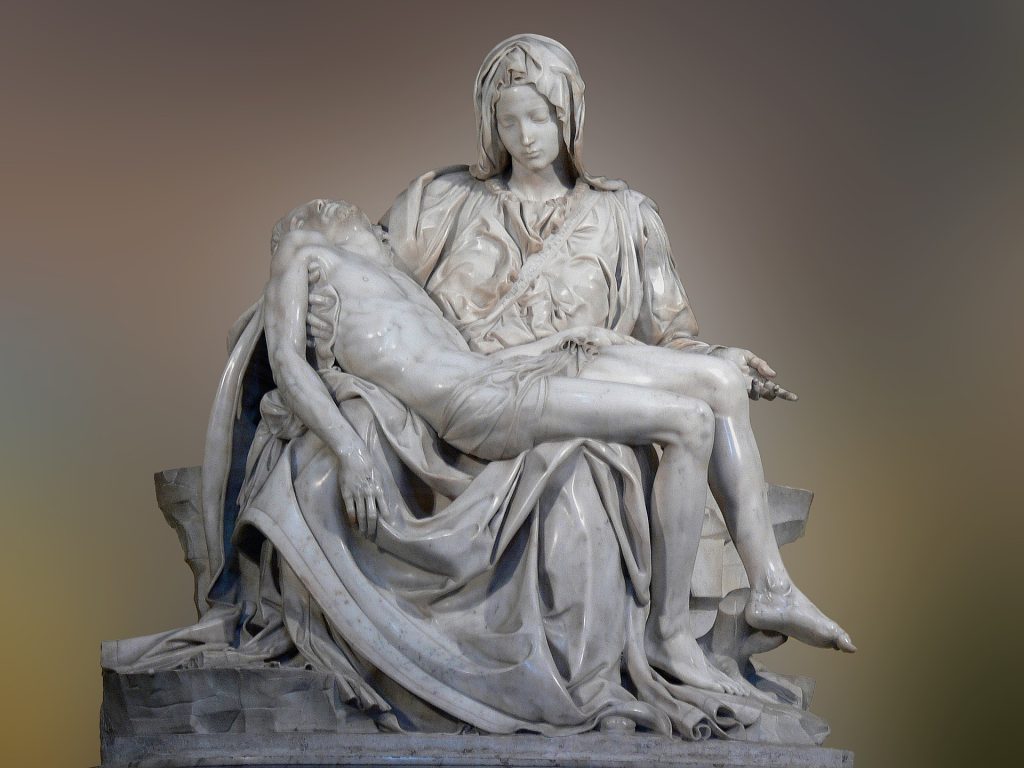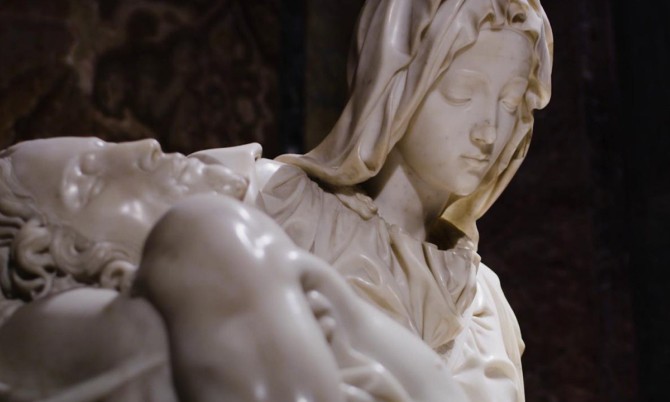
A sculpture of superhuman beauty and perfection, sculpted in 1498 by a very young Michelangelo – he was just twenty-three years old – commissioned by the French Cardinal Jean de Bilhères Lagraulas for his tomb in the Chapel of the King of France in Saint Peter’s, a no longer existing chapel that was located on the southern flank of the ancient Basilica.
“A robed Virgin Mary with the dead Christ in her arms, as large as a good-sized man” – as it is defined in the contract – a statue rendered from a single block of Carrara marble in just nine months. A masterpiece on which Michelangelo wished to inscribe his name (something he did for no other work) because, as Vasari reports – “he was pleased and satisfied with himself” and “because one can see in it all the value and power of art”.
The words “michael āgelvs bonarotvs florent facieba” (“by Michelangelo Bonarroti, Florentine”) are indeed engraved above the belt that crosses the Madonna's breast: as Giovanni Papini writes, “the inscription rests above the very heart of the Mother”. A Mother who appears younger than her Son, because she is Immaculate and without sin, and because of Our Lord, the Virgin Mary is at the same time Mother, Daughter and Bride, as Nanni di Baccio Bigio wrote in 1549 and as Dante recalls in the last canto of Paradise:
Humbler and higher than all other creatures,
Fixed aim and goal of the eternal plan,
You are the one who lifted human nature
To such nobility that its own Maker
Did not disdain to be made of its making. »
A “dead” Christ who nonetheless already has in himself the “Life” of the Risen One: lifeblood runs through him and death does not have the definitive victory in that wonderfully sculpted body.
Written by Pietro Zander
